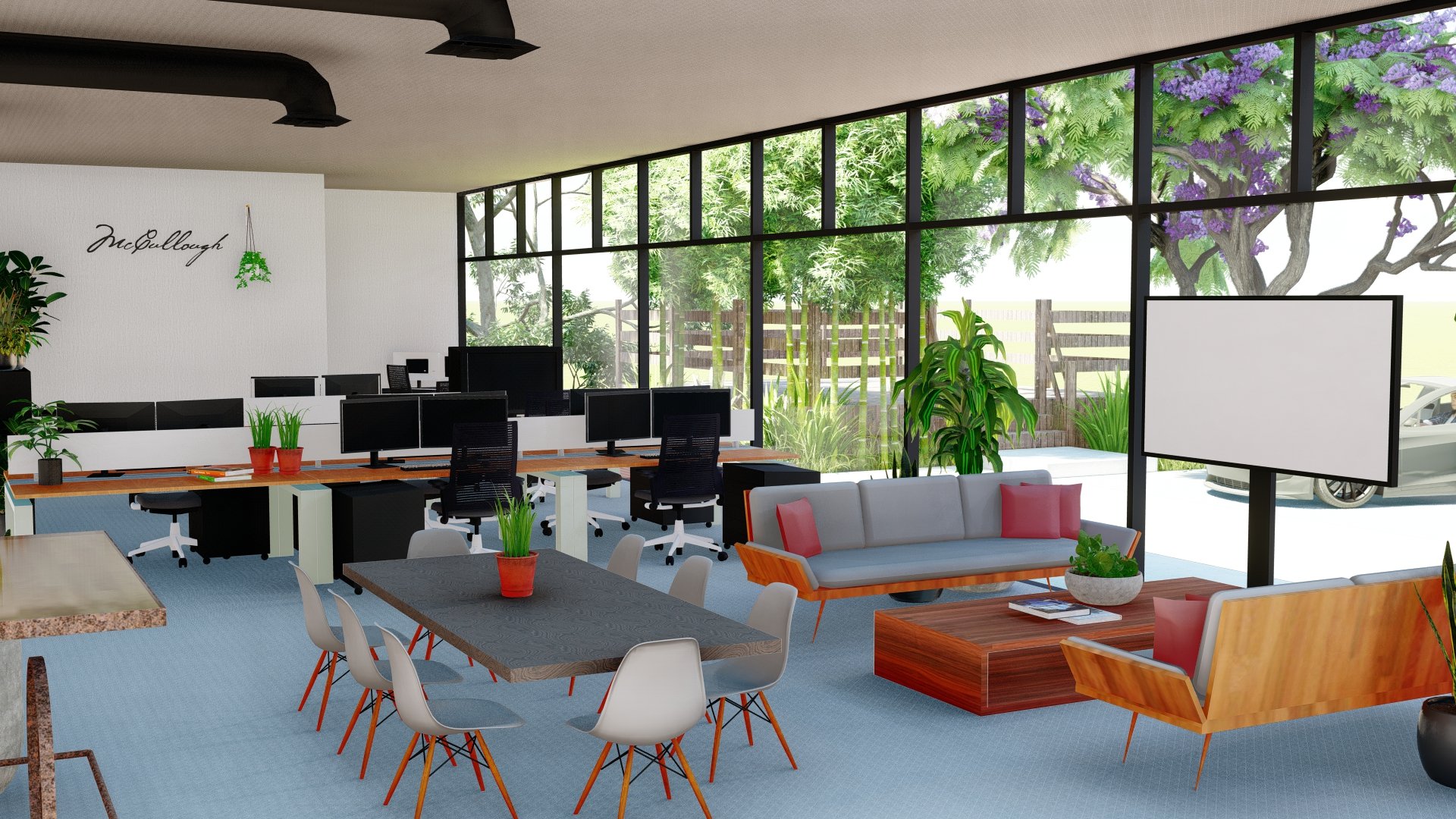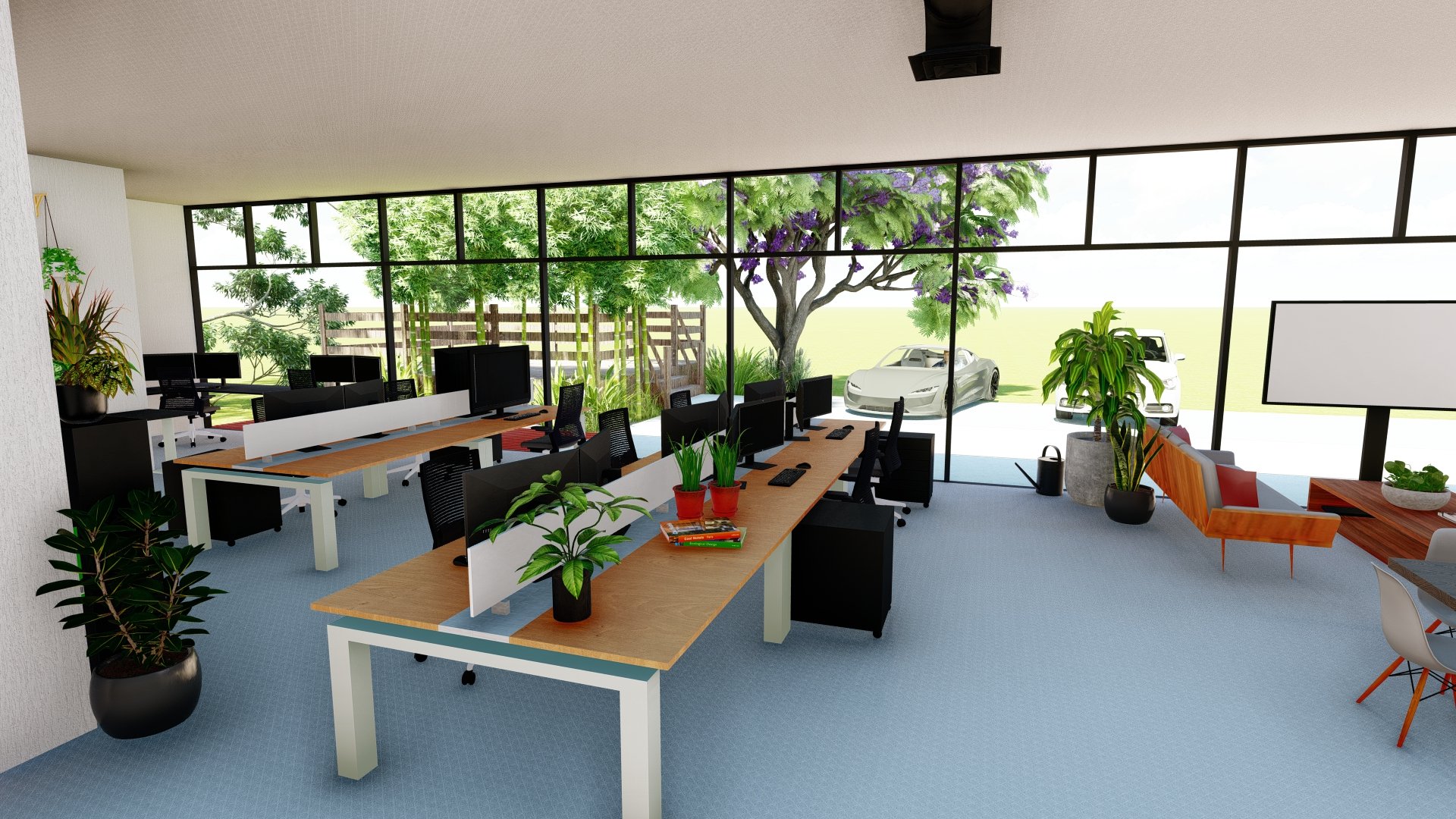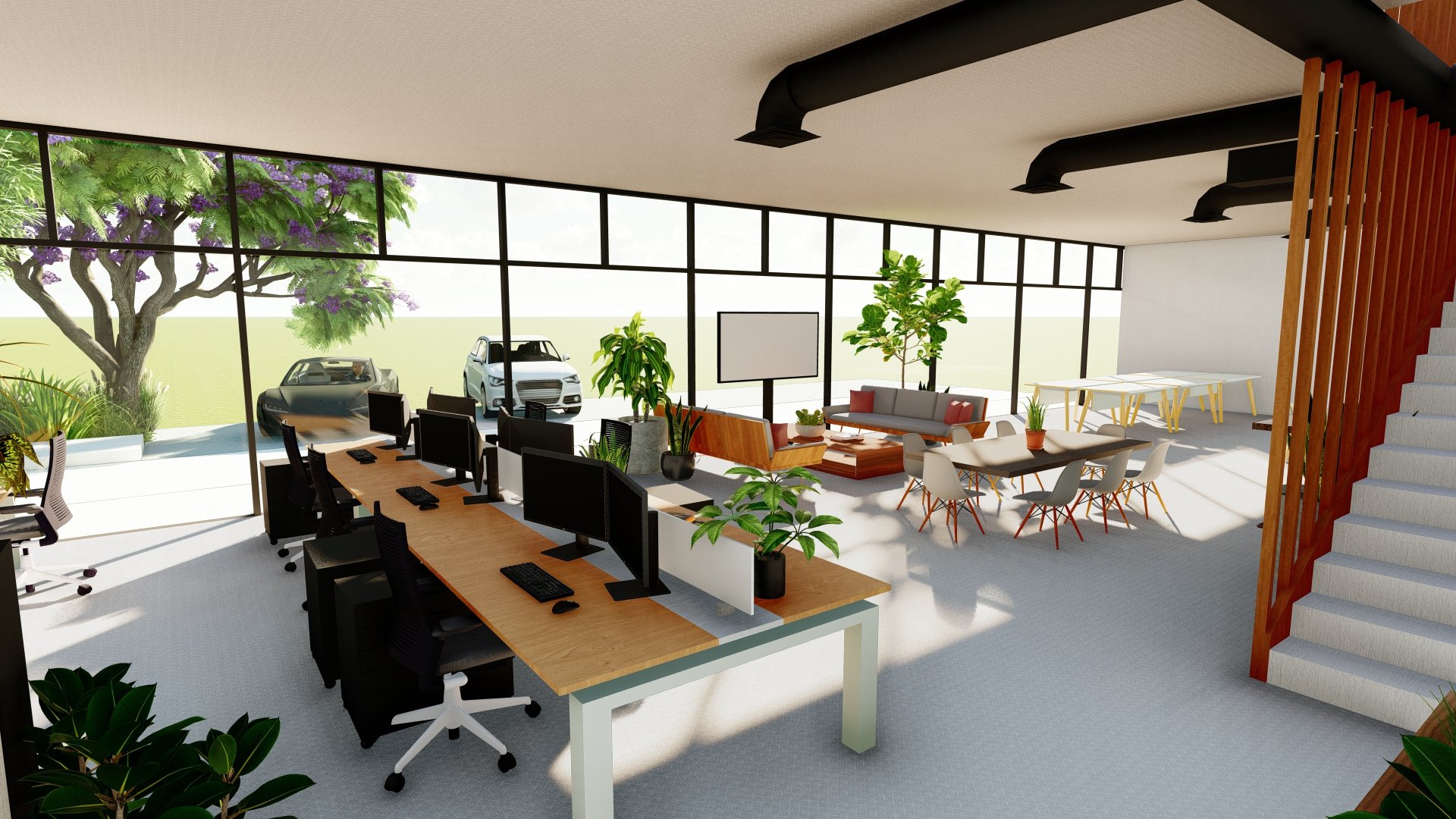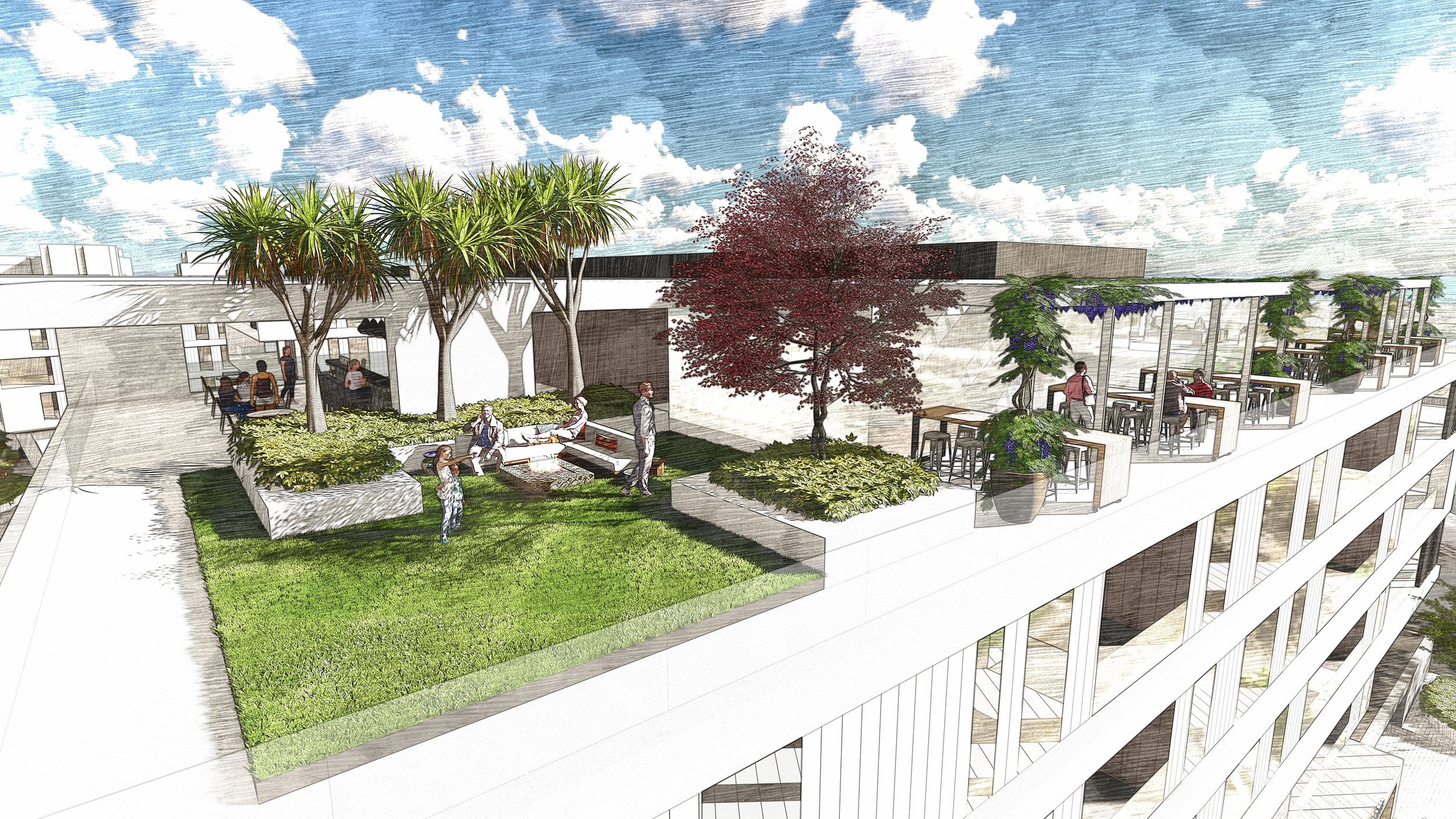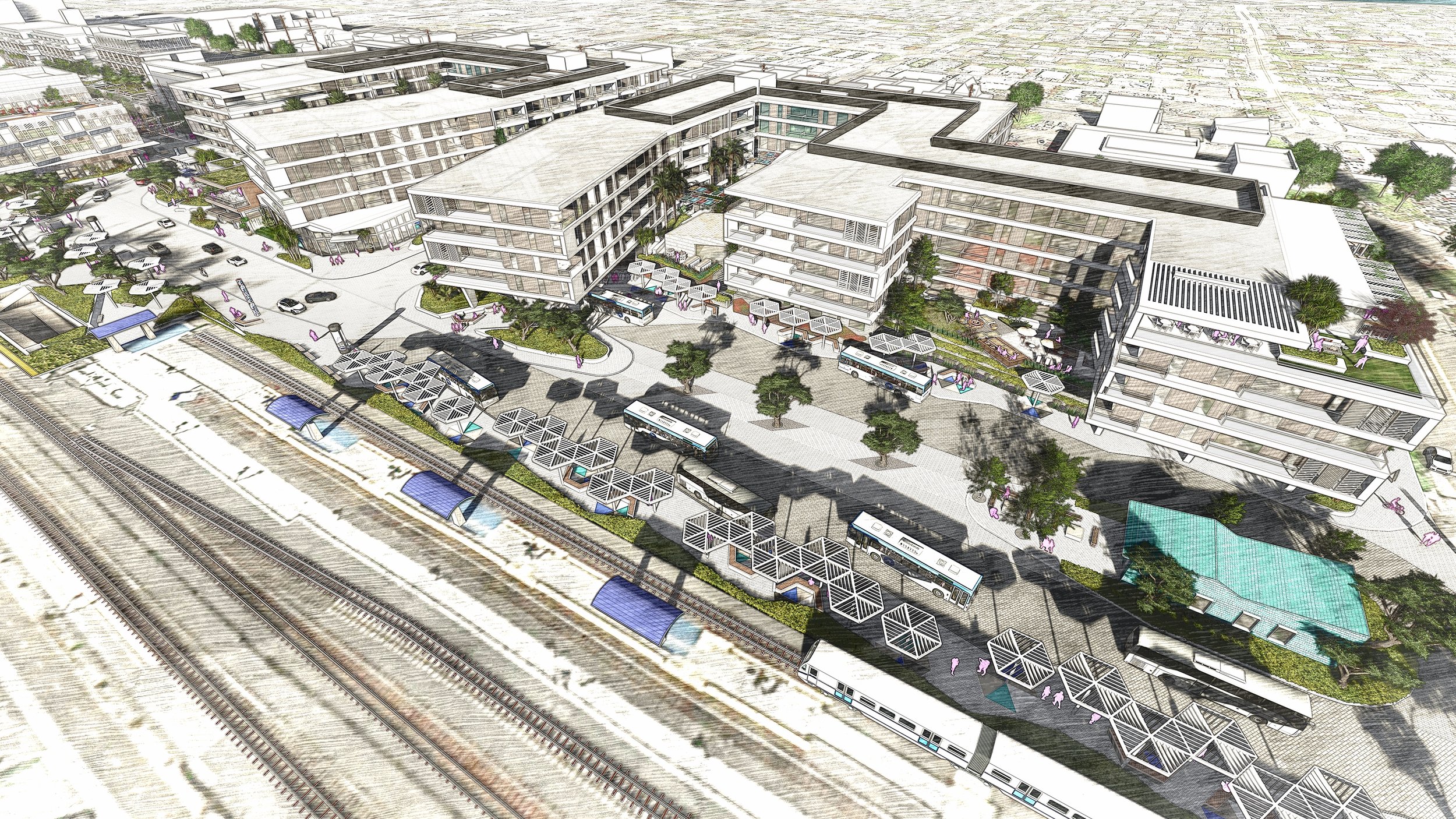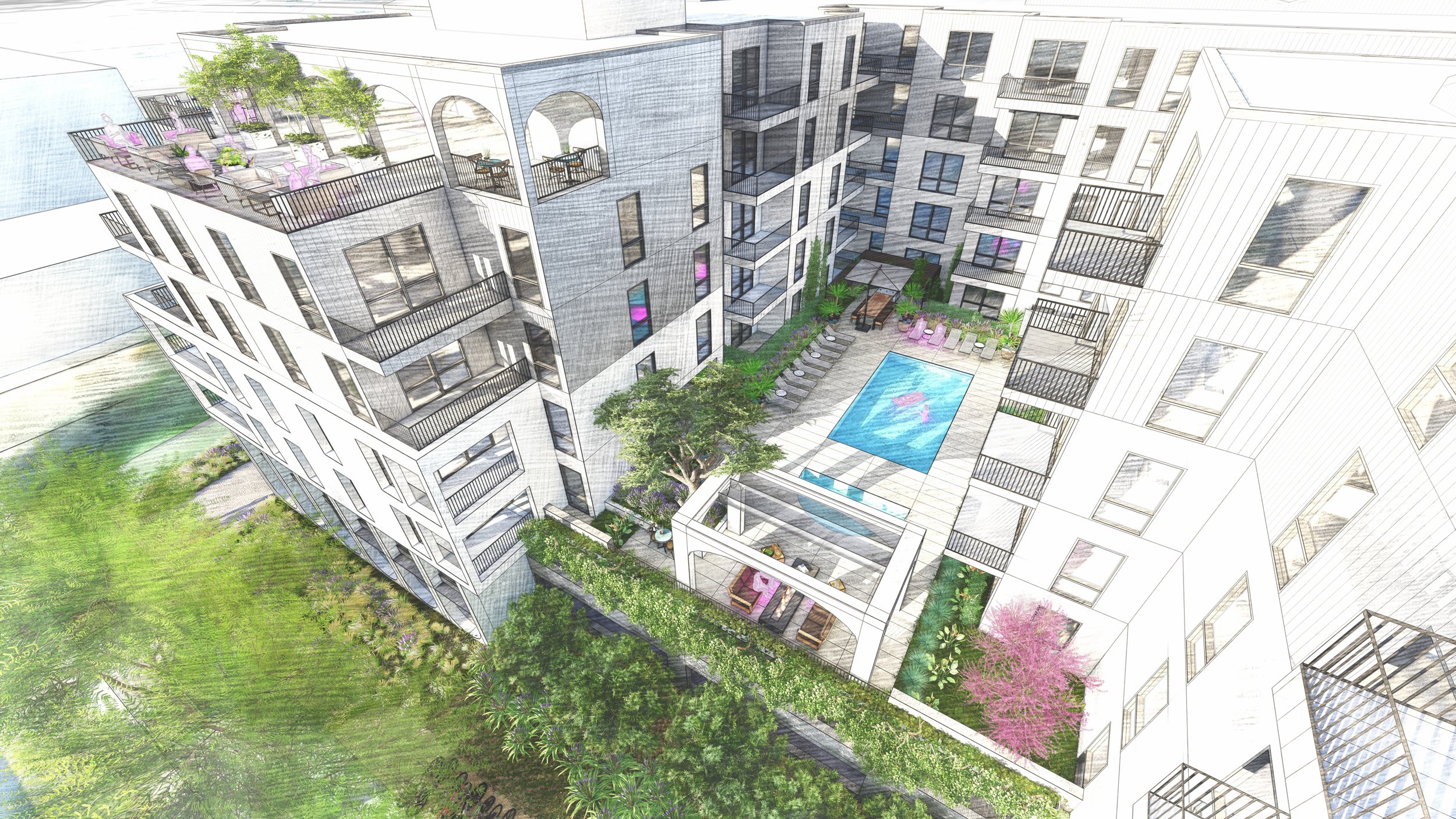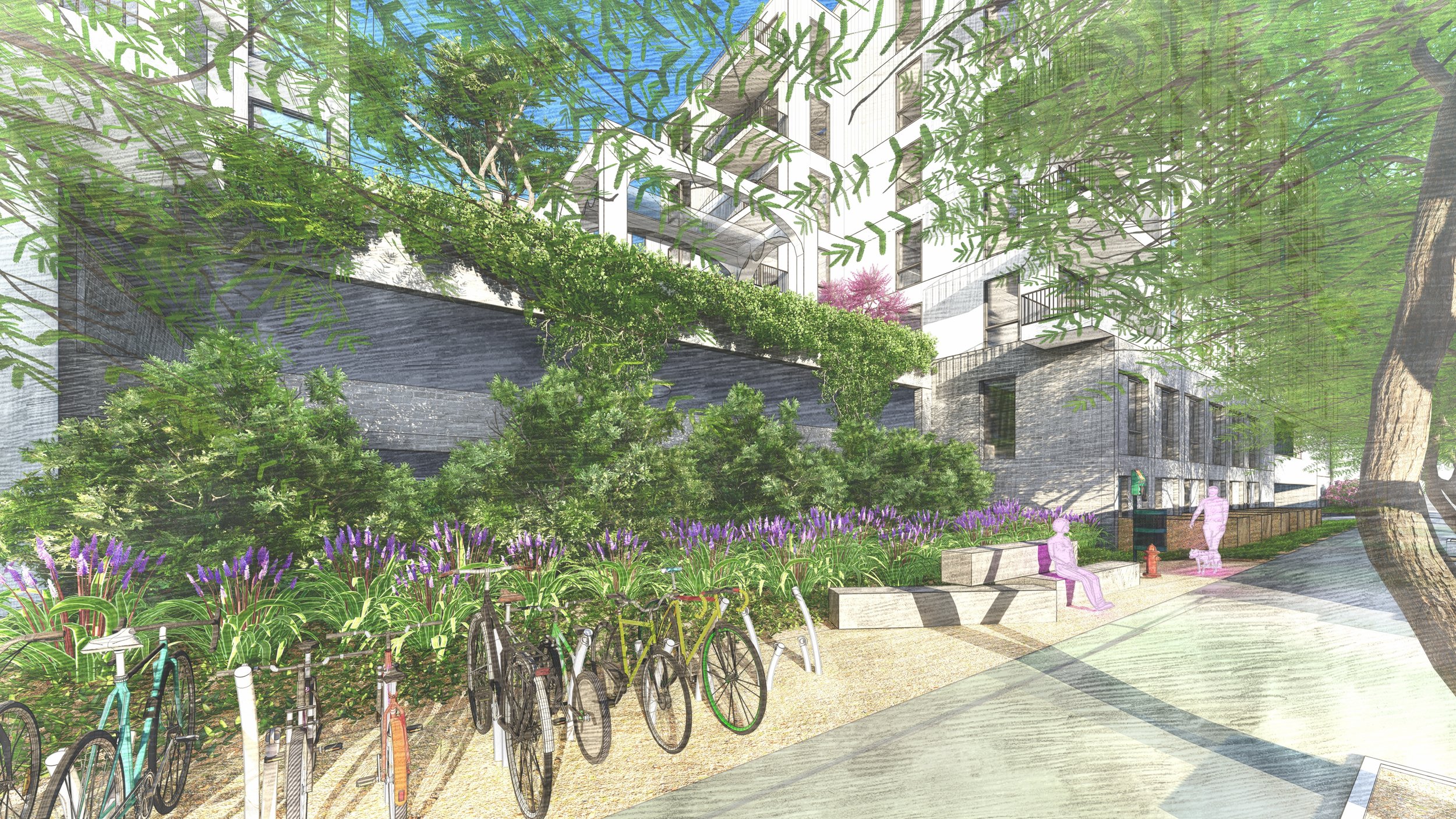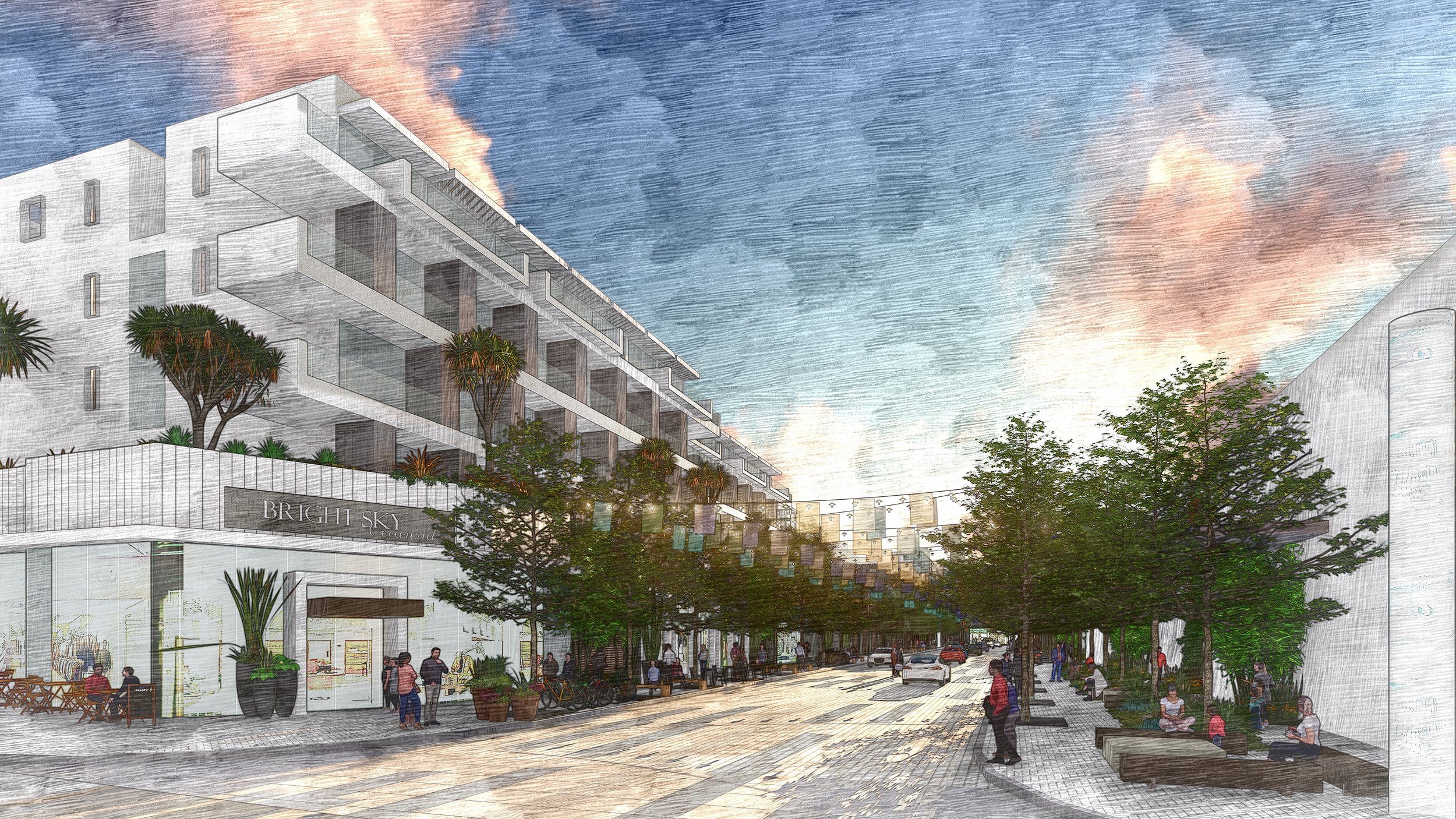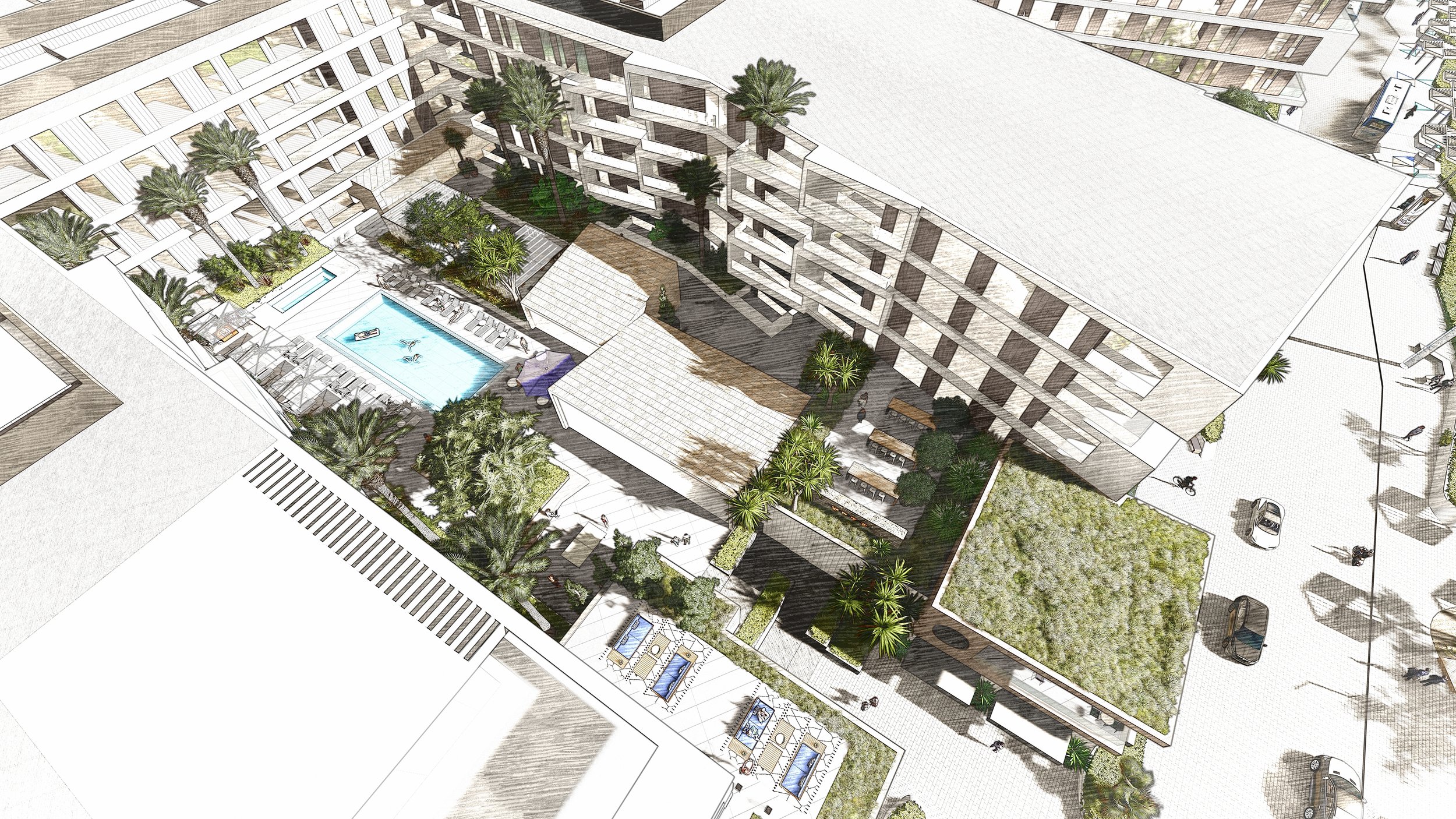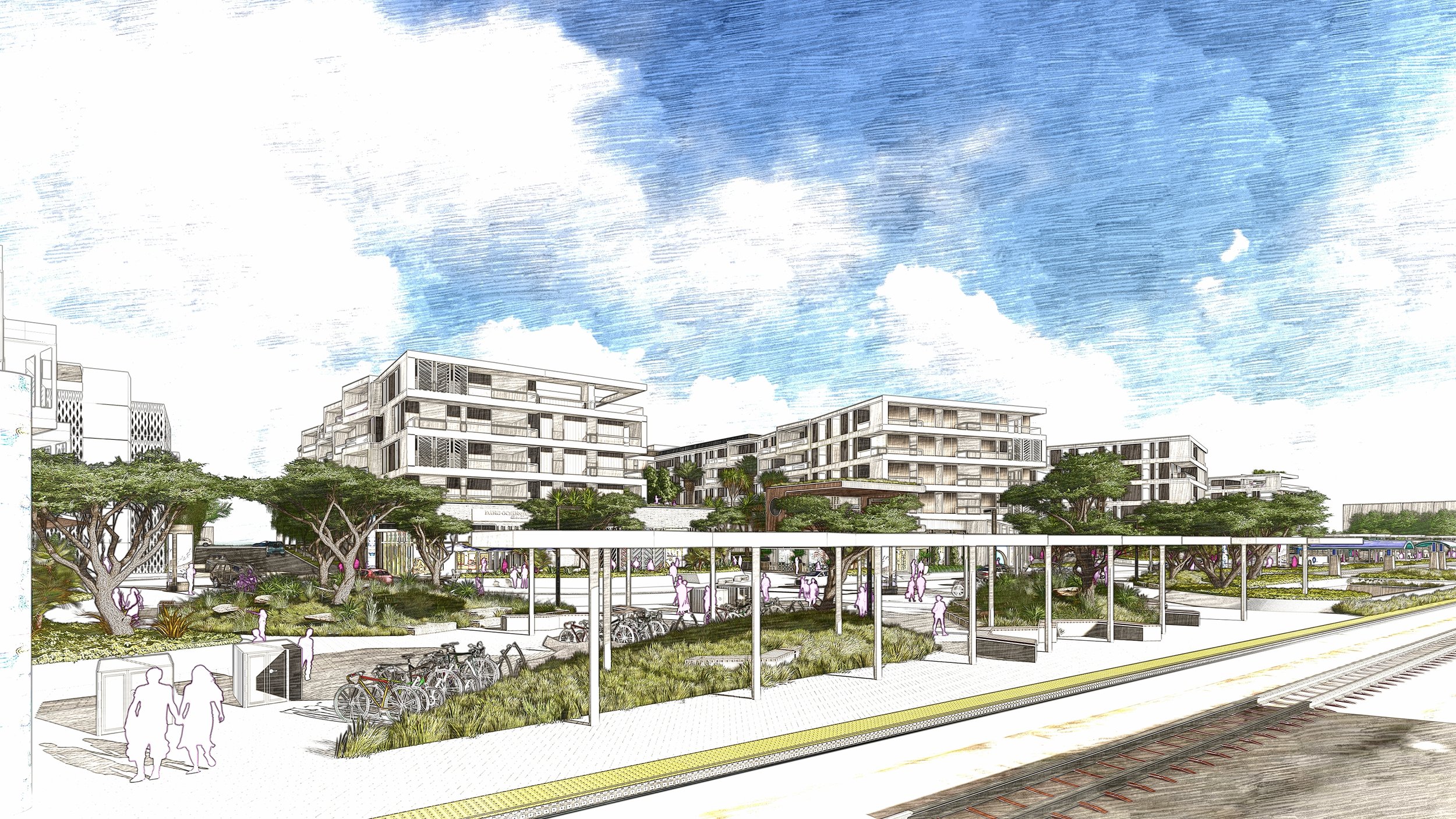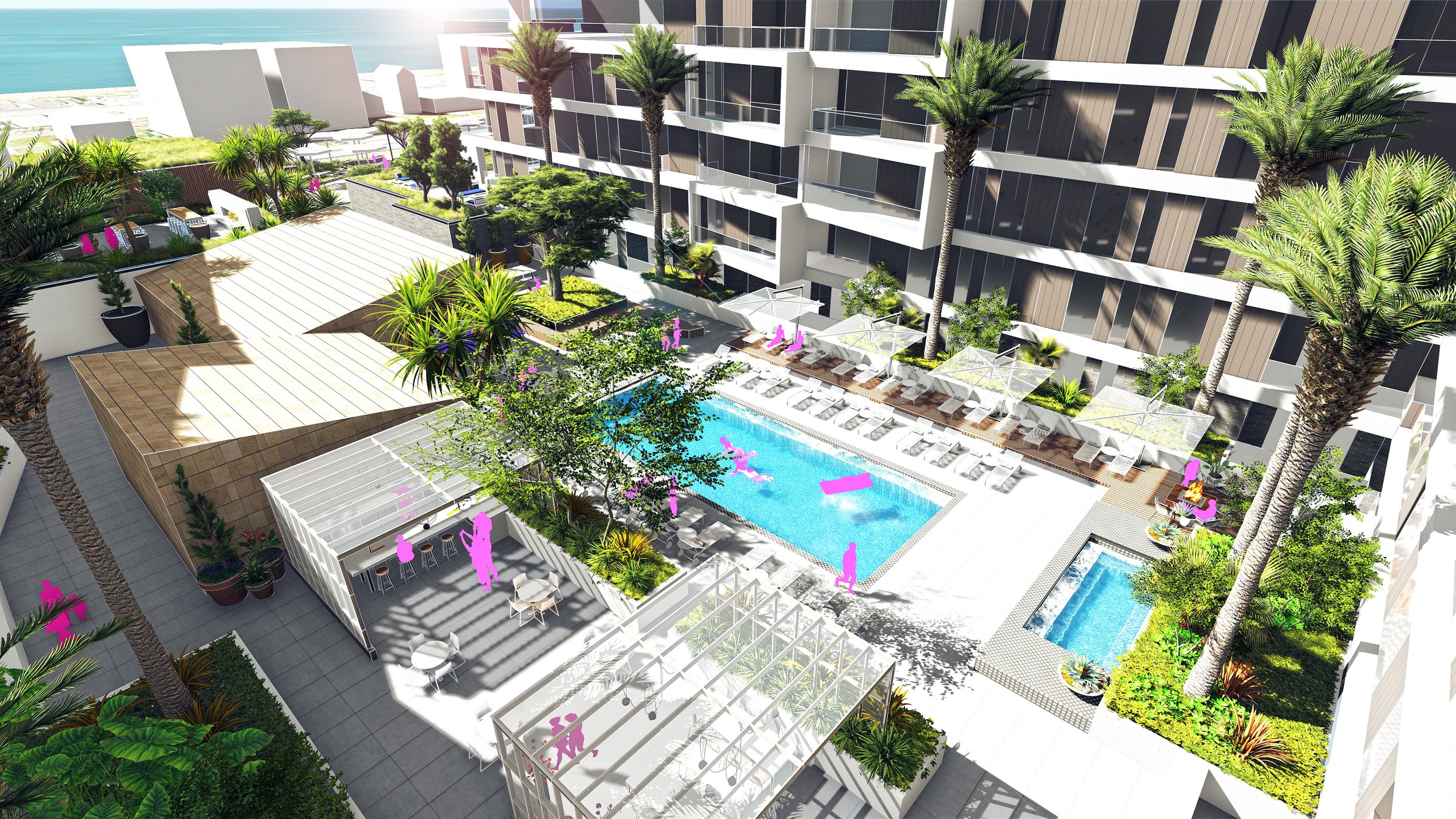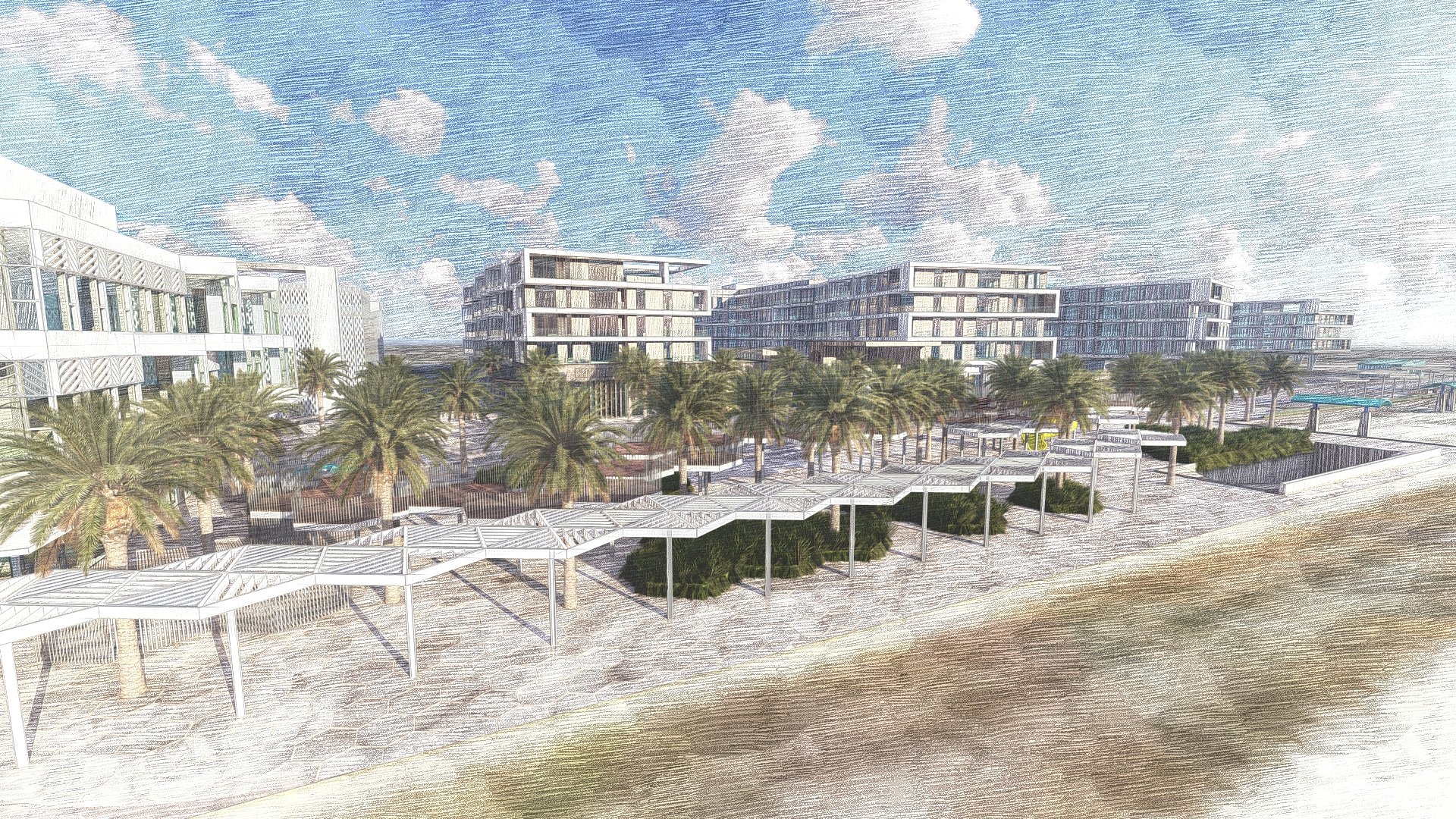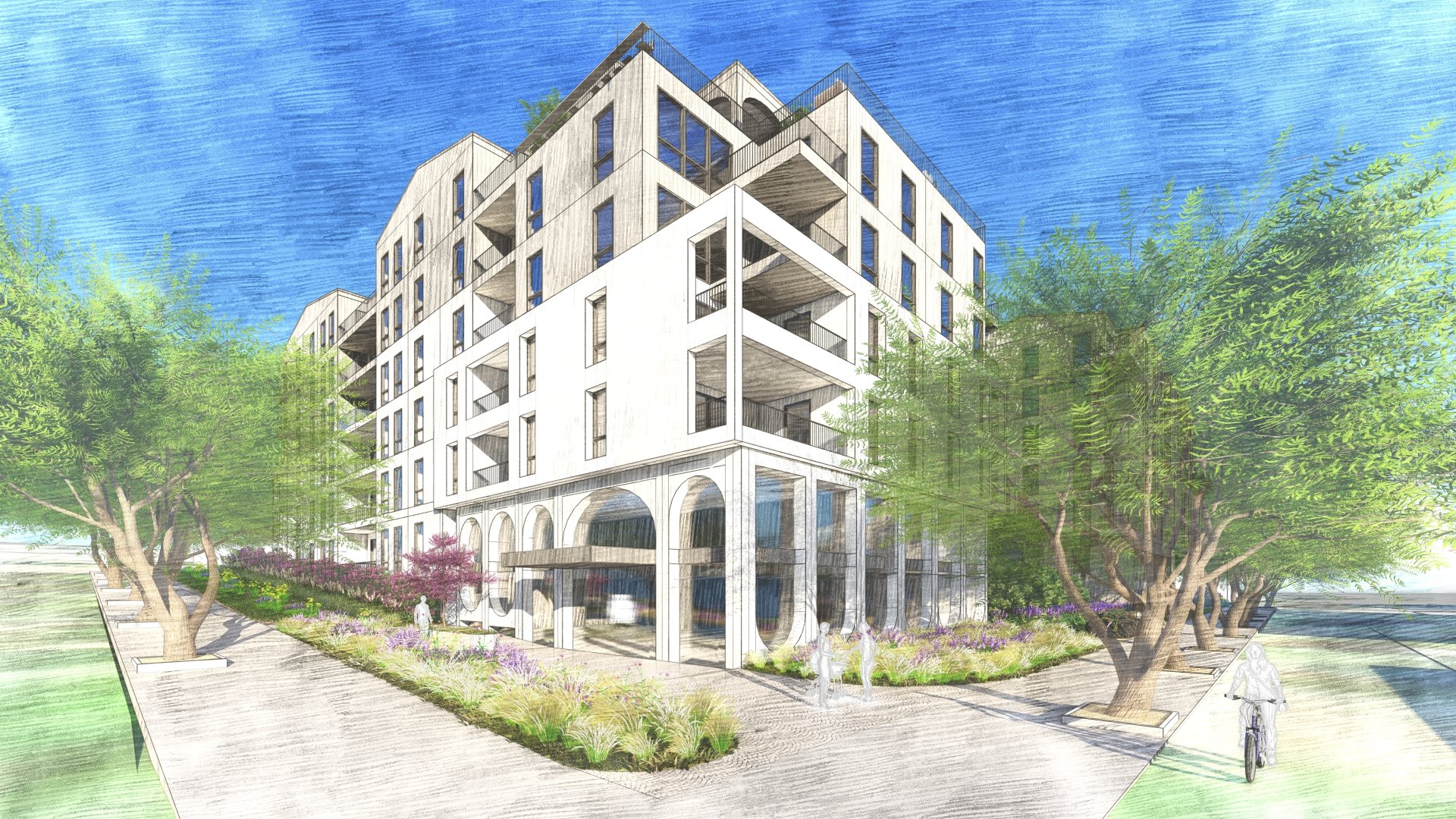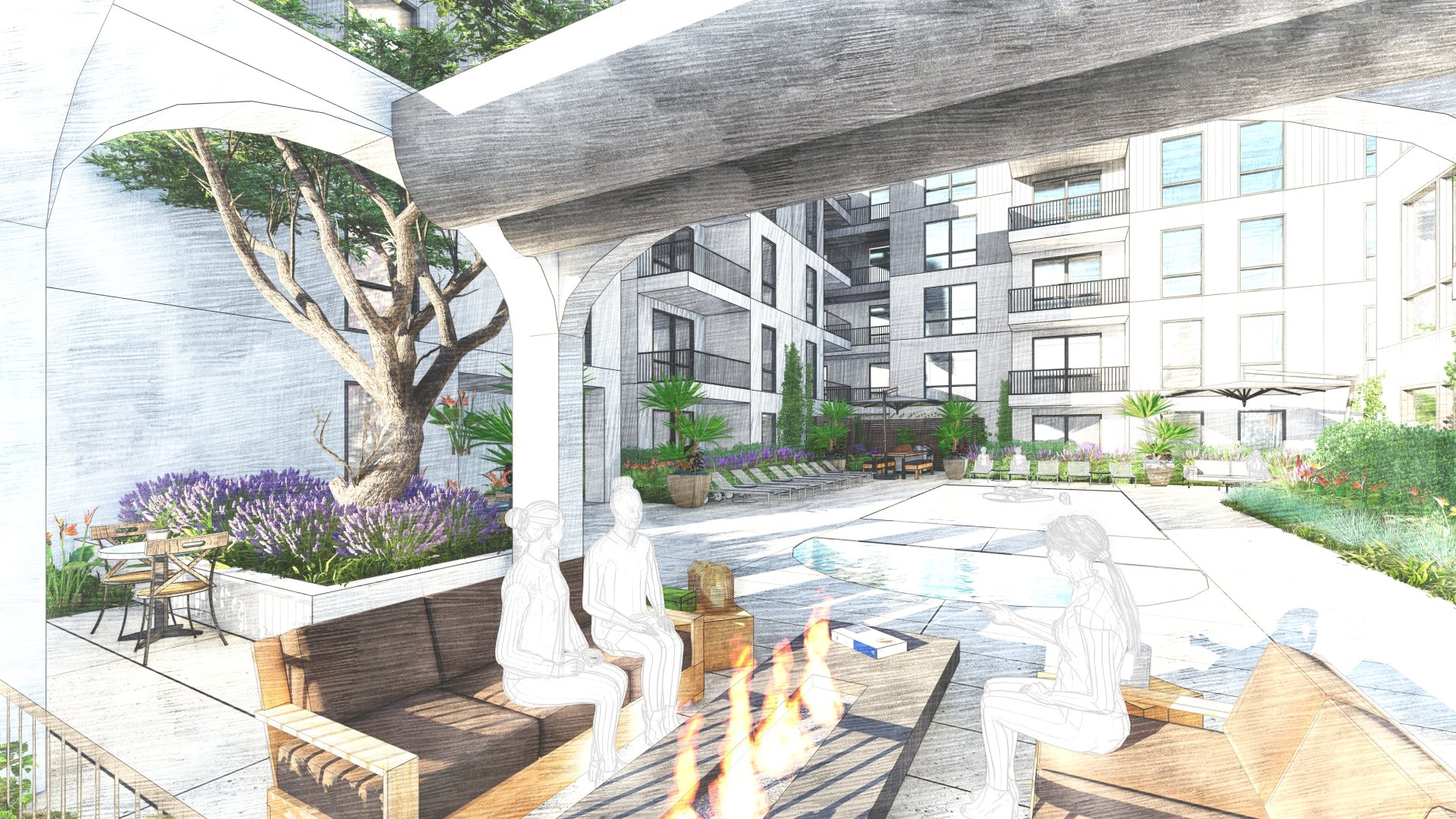McCullough Moves Offices to Historic Hillcrest Building
McCullough Expands at The Design Center by San Diego Architectural Legend,
Lloyd Ruocco
Last week, McCullough Landscape Architecture relocated its offices to the historic Design Center, located at 3605-B Fifth Ave. in the Hillcrest neighborhood of San Diego, CA. The building was designed by architectural giant Lloyd Ruocco, FAIA, who designed over 150 projects in San Diego and is credited with pioneering the post-war modern architectural movement in San Diego. McCullough’s move to the Design Center will allow the firm to grow, and be part of an effort to honor Ruocco’s legacy by transforming the building into an epicenter of design-based organizations.
The Design Center
Built in 1949, the Design Center served as Ruocco’s studio, along with the studio and showrooms of his wife, an interior designer and professor. The couple also brought other artists and designers to the Design Center, helping shape the region’s art scene. The City of San Diego named the Design Center a Historical Resource Site nine years after Ruocco’s death in 1981. Like many of Ruocco’s designs, the Design Center is primarily redwood and glass, with a flat roof, floor-to-ceiling windows, and decks overlooking the canyon. The building reflects Ruocco’s focus on harmonizing the built environment with the outdoors.
David McCullough, ASLA, PLA, Principal Landscape Architect at McCullough, states,
“The Design Center is an inspiring space—especially for a landscape architect! The open, California Modernist architecture allows building occupants to appreciate nature even while being inside. We also have an opportunity to grow in this space, and build synergy with other designers.”
At the Design Center, McCullough joins architecture firm RDC, a frequent partner, and architect Frank Wolden of FRANK, a long-time collaborator. Spaces at the Design Center are being leased to design-led organizations as the building transforms into a nucleus of creativity and innovation
Client of the Month: Toll Brothers
Interview with Michael McCann, Regional Director of Acquisitions and Development
Oceanside Transit Center Redevelopment
McCullough is excited to feature Toll Brothers as our September Client of the Month. Toll Brothers opened its doors 55 years ago in 1967 when Bruce and Bob Toll started buying dairy farms and turning them into housing, quickly crafting a legacy in the home building industry. Beginning in Pennsylvania and growing to over 60 markets in 24 states, Toll Brothers was named the World's Most Admired Homebuilder in FORTUNE magazine's 2022 survey of the World's Most Admired Companies®, the seventh year it has been so honored.
We sat down with Michael McCann, who leads development and acquisition for Toll Brothers Apartment Living in Southern California. Michael was hired six years ago as the first employee for Toll’s Apartment Living initiative in California, working out of his home to secure opportunities. Since then, Toll has built a strong Southern California pipeline and rapidly grown, with the Apartment Living team now including 14 employees in its Laguna Hills office. Michael was excited to join the Apartment living development division of Toll Brothers, where “he could leverage Toll’s reputation as a best-in-class luxury residential developer to start something from scratch and expand Toll’s Southern California apartment business in a very entrepreneurial way.” Utilizing its luxury home building presence wherever it has expanded, Toll’s Apartment Living division has been growing organically nationally for the past 10 years.
The recognition the company has received is impressive, which stems from taking great care in hiring the best people and cultivating special communities everywhere they go. They have a true dedication to quality and customer service, and to giving back to the community by contributing to organizations such as the American Cancer Society, Habitat for Humanity, American Red Cross, and more.
Toll Brothers in Southern California
From a development point of view, in the Southern California region Toll Brothers leans heavily on creativity, outstanding people, flexibility, and a strong balance sheet. The team works in a creative office environment, where there is a need to consider distinctive approaches by applying solutions specific for the community and focusing on unique projects that their competitors are not doing. They do this by bringing in a creative set of consultants to work together towards reaching their goals.
Michael is specifically excited about a few upcoming apartment projects that are currently under construction. The first being The Lindley, a 422-unit 37-story luxury apartment community in the Core-Columbia district just south of Little Italy in San Diego. The Lindley’s luxury environment will be punctuated with large penthouse and townhome units, some of which will have their own private skydecks on the top of the building. Another project is called The Rafferty, which is located in Santa Ana. It is a podium-style building in the heart of downtown Santa Ana. One of the more interesting design aspects of the community is the inclusion of part of the historical façade of the original Orange County Title Building. These communities are going to be nice showpieces for what Toll Brothers Apartment Living can bring to the market and both will begin leasing in 2024.
McCullough and Toll Brothers Collaboration
Toll Brothers and McCullough began their working relationship in 2020, when the City of San Diego was accepting proposals to re-imagine the Midway District neighborhood. Titled Midway Village+, the entire team proposed a vision for the nearly 50-acre sports arena site in San Diego that would include more than 4,000 housing units, a new arena, a soccer stadium, a central park, a school, and some retail and office space. The Midway Village+ plan would provide housing options for all income levels, including a significant number of new affordable housing units — 1,780 in total. Their focus is on building new homes — not just “housing units.”
“David has been a prominent part of the Midway Village+ team and planning for the San Diego Sports Arena property. He has brought a great deal of experience, sophistication, and strategic thinking to the process. McCullough has been very valuable to our efforts to bring forth what we believe is far and away the best plan for San Diego.” -Michael McCann
Midway Village+ | Read more about Midway Village+ at midwayvillageplus.com.
More recently, Toll Brothers and McCullough joined forces on the Oceanside Transit Center Redevelopment project in partnership with the North County Transit District. Toll Brothers was the highest-ranking proposer based on its financials and thoughtful approach. The plan is to creatively generate more value and more activity at the transit center with the addition of 547 apartments, 165 hotel keys and a 50,000 SF office building that will serve as the new headquarters for the North County Transit District. The city of Oceanside has been very supportive thus far.
“We think it’s an exciting project and we are confident that we can blend the various uses in a way that becomes a very cohesive community at the transit center. McCullough has worked seamlessly with our architect to bring the site plan to life and help people see the vision for what we're trying to create.” – Michael McCann
McCullough is thrilled to be collaborating with Toll Brothers. We look forward to the completion of the Oceanside Transit Center redevelopment and to continuing to work together on other projects as the need for strengthening communities evolves. We are excited to witness the expansion of Toll Brothers’ expertise in apartment and mixed-use development.
Oceanside Transit Center Redevelopment
Changes in the Multifamily Landscape
of Northern California
Photo Courtesy of Bisnow
McCullough was proud to sponsor the Northern California Bisnow Multifamily Annual Conference that took place on September 15, 2022 in San Francisco. Mahalakshmi Balachandran, our Northern California Senior Associate attended the full day event, and has a pulse on important business needs, challenges, and demand changes. Keep reading below for takeaways from the event.
Highlights from Keynote Speaker Bill Witte, Related California
San Francisco has its share of challenges. It is important to do better with time and availability of supply, time to get several projects approved and the annual deliveries. It’ll be at least two years from now to get to the point. The job growth numbers which could drive apartment rents in many respects are stronger outside the Bay Area than in the city. The urban core is expanding outside the city with an increase in community and urban mixed-use projects like Bishop Ranch and Springline Menlo Park. This trend will continue to do well outside the city because of the type of renters these projects are aimed at.
“Things as much as they change, they don’t change as much. Unless you believe that the city is falling off a cliff, it’s still beautiful and people still want to live in it.” - Bill Witte, Related California
How do we change the Central Business Districts (CBD)?
Unlike the CBDs like midtown of New York, Chicago, or LA that suffered during the pandemic at a greater level, the mixed-use areas however, survived. In the city of San Francisco, 60-70% of the taxable income comes from small businesses in and around central businesses. San Francisco ignores the fact that as a city, it didn’t have to try. It just happened. In New York, in the late 70s, the “I love NY campaign” made a big difference in 10 to 15 years. San Francisco is beginning to get that message. When the areas around the offices are fully programmed cautiously, people are going to go out there.
Developing in a volatile economy
In this economy, the construction cost didn’t drop but went from 4% to a 40% higher. This affects the affordable housing market when you need 900,000 units and are limited with the number of subsidies that can be issued. One thing that worked for Related California is reaching out to the Unions of the construction workforce to help with the sub-contractors to come up with solutions collectively. Focus should be on changing the construction cost and on the infrastructure bill. The positive is that the Governor and the State have ramped up the cities to build more housing, but opportunities are masquerading as unsolved problems - the financials, construction costs, labor shortage, etc.
“Things will happen as long as there is a recognition.” - Bill Witte
Adapting to Demand Changes of Affordable Housing
With the current scenario to figure out logistics, efficiencies, labor, entitlements, and city approvals, “time” is directly corelated to inflation processes that will be an impediment to building housing, and it must move faster. In San Francisco, there has been a 35% drop in rents during COVID across portfolios and developers have all-in for most projects. There will be a significant increase in rents from almost $550/SF to about $800/SF but this must be a systematic change.
“Cost is the biggest deal today. Earlier was the supply issue, now we are staring down the face of the National Railway Strike.” - Stuart Gruendl, Bay Rock Multifamily
HUD, Region IX is looking at modular manufactured housing in the Bay Area as one of the solutions to address higher costs in affordable housing supply and affordability. HUD code provides pre-approved requirements for those types of housing, which is comparable to San Diego Housing Commission’s inclusionary regulations.
The state of California over the past four years has committed to $10 billion toward affordable housing. Cities like San Francisco were always on the cutting edge since 2012, converting public housing projects through public private partnerships into tax credit projects. Smita Seshadri of Bridge Housing illustrated that the City has a huge pipeline for portable housing projects, but California is up against the tax-exempt bond volume cap. The federal money allotted to each state is based on population. That means, because California is such a populated state, we must keep applying for multiple funding grounds for tax credit and bond allocation.
While talking about supportive housing, Dixie Baus, Eden Housing, shared that it is necessary to not see it like a box and incorporate support services in every development, whether it be to get a doctor, or a homework club, or access to internet, which creates healthier environments.
The pandemic has brought the change in public perception. The idea that everyone should have a home, a safe and affordable shelter, shows that development has arrived. This is a huge boost to the ability to build more closely while streamlining with local government.
We are currently developing a community where people can learn, live, work and get to know each other. Since COVID, the boundaries have been vanishing. Hence development of residential has become one of the things that we are relying on to do more than just building a building. How do we make a better place to live? Like Dixie says, “One corner at a time!”



